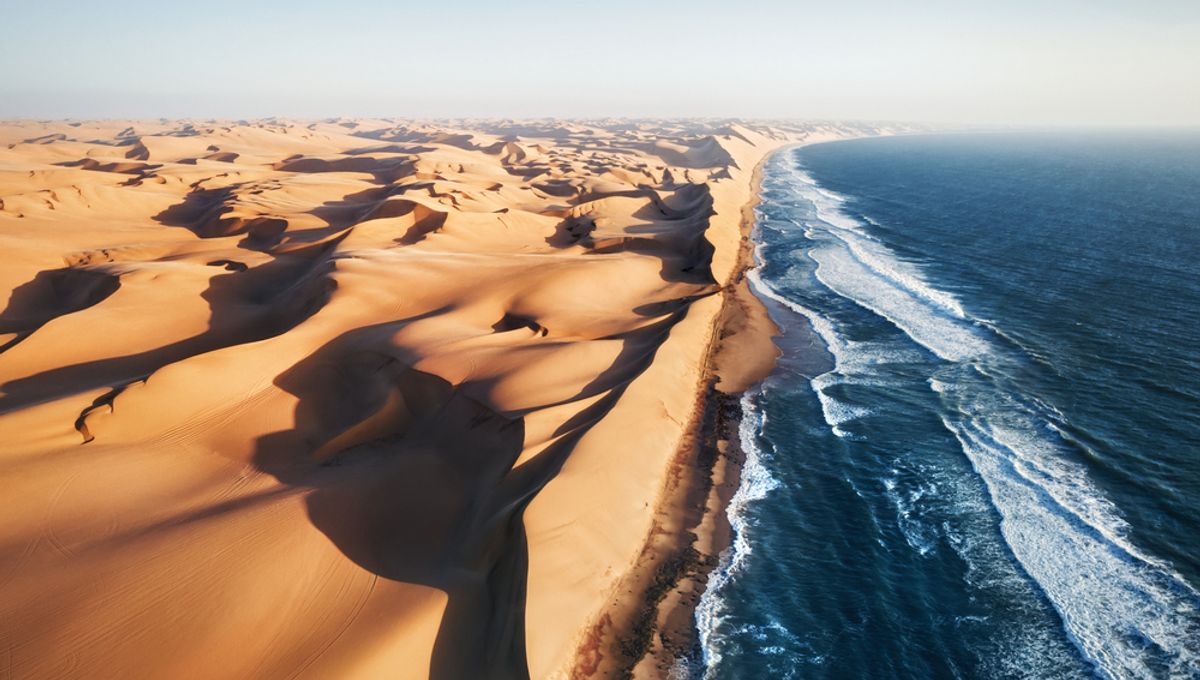
Deep beneath Namibia, there lies a flooded cavern known as Dragon’s Breath Cave that’s home to the largest non-subglacial underground lake on planet Earth. The true size of this body of water was not known for decades as explorers could only dive so far, but recent technological advances have forced the cavern to give up some of its ancient secrets.
Recent surveys have sent robots into the bowels of the Dragon’s Breath Cave and shown it has a depth of over 200 meters (656 feet). Reliable scientific estimates of its total area are hard to come by, but it’s often cited to be larger than the “Lost Sea” under Tennessee, the largest non-subglacial underground lake in the US.
Namibia is a coastal country in southern Africa that’s sometimes called “the land that God made in anger” owing to its spectacular yet desperately arid landscapes. The name Namibia itself stems from the local Nama word “Namib,” which means a vast and empty place.
This gives you some idea of the strange and intense geology that can be found in this unique part of the world. The African country has at least 124 caves, a significant number of which are found in the Otjozondjupa Region, including Dragon’s Breath Cave.
The cave is thought to have picked up its name from a warm gust of humid air that greets visitors at its entrance. Light is almost totally absent from most parts of the cave past its narrow entrance. The waters of the lake are said to be perfectly clear and, perhaps surprisingly, they do harbor life in the form of tiny shrimp and worm-like creatures.
A clip from David Attenborough’s BBC documentary Africa claims that the Dragon’s Breath Cave is home to the golden catfish, an oddly beautiful and critically endangered species of airbreathing catfish. However, others say this species actually inhabits a similar cave in Namibia called Aigamas Cave.
Regardless, we still do not know the full catalog of biodiversity that dwells in this bizarre ecosystem as biological studies of the cave appear to be few and far between.
The first documented instances of people exploring the cavern emerged in the 1980s. As per the book “The Darkness Beckons” by Martyn Farr, one of the first attempts to formally explore the cave was by a team of divers and cavers from the South African Speleological Association in 1986.
Some early estimates from this time suggested the underground lake held waters there were at least 150 meters (492 feet) deep, but an expedition in 2019 by Stone Aerospace used an autonomous underwater vehicle to prove it was significantly deeper. They found the water surface was some 59 meters (193 feet) below the cave entrance and it ended at a ground depth of 264 meters (866 feet), meaning the body of water has a total depth of over 200 meters (656 feet).
The mini-submarine cruised into the depths of the cavern and mapped it out using lasers and high-resolution sonar. Along with revealing a vast new chamber near the entrance, it showed the cavern is shaped like a pointy shoe that gently angles downwards before pinching off at the end.
You can see the 3D visualization of Dragon’s Breath Cave produced by the mission right here.
Source Link: Dragon's Breath Cave: World's Biggest Underground Lake Still Holds Secrets